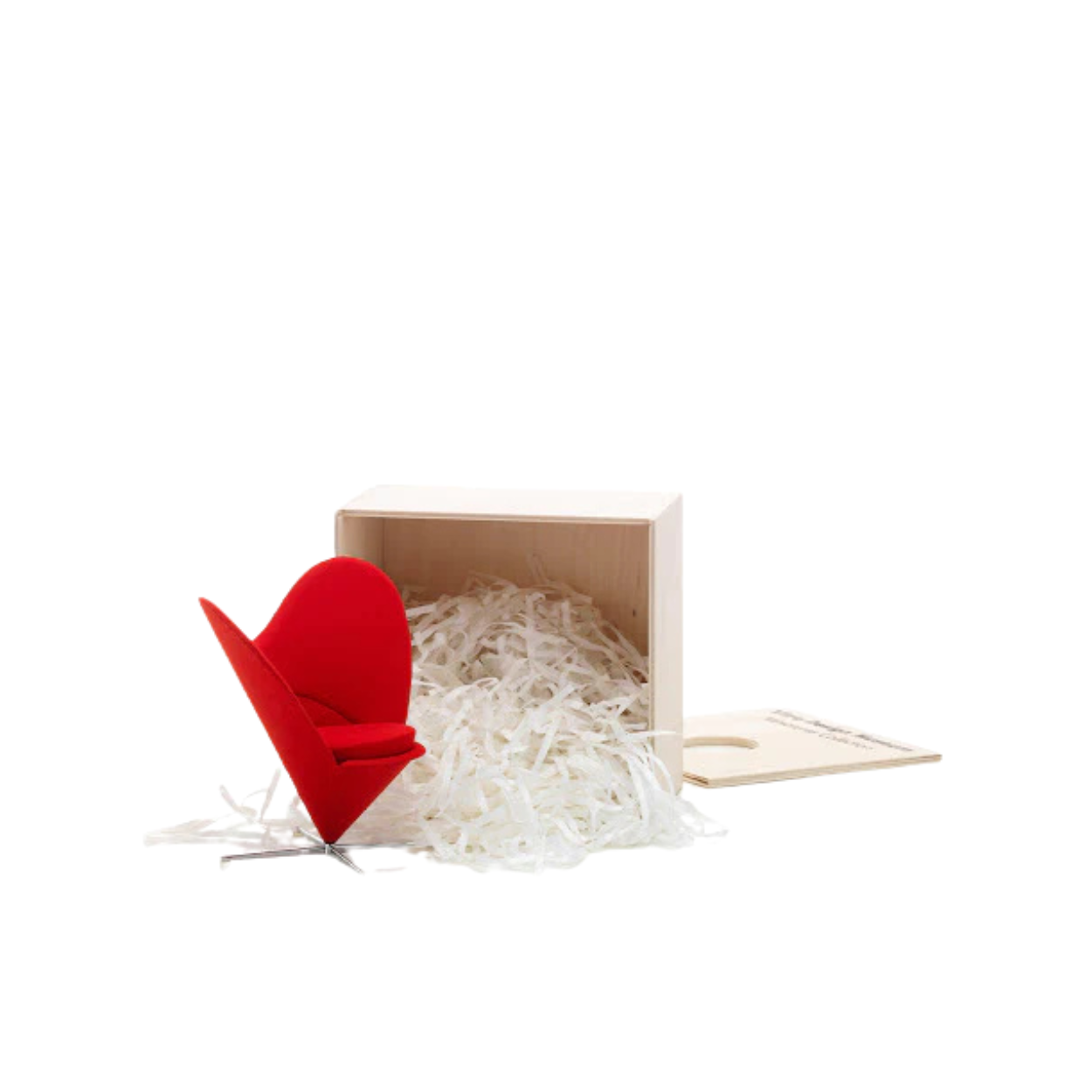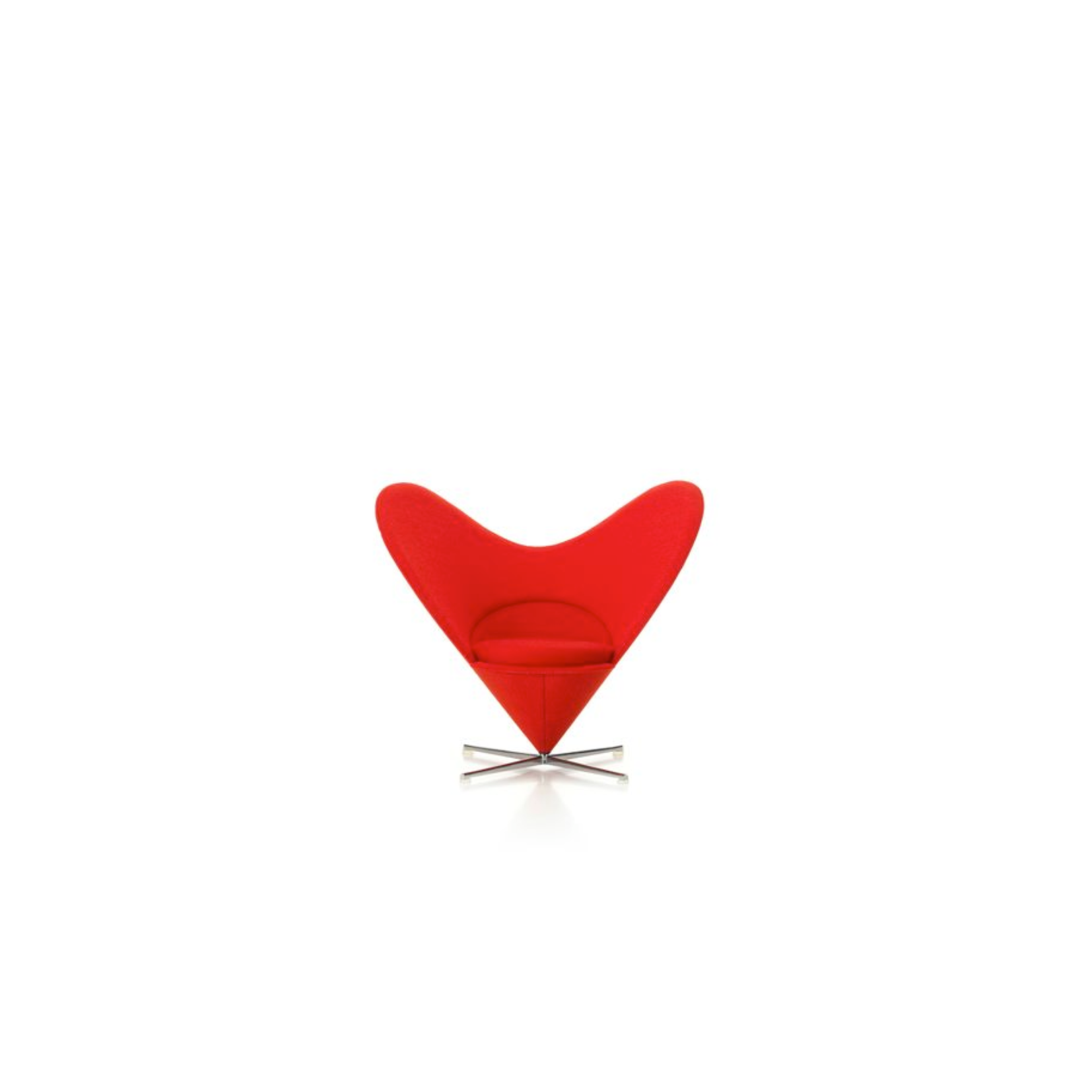
Vitra
Miniatures Heart-Shaped Cone Chair
Verner Panton, 1958
Description
In the 1930s-40s, Scandinavian design emphasized functionalism with simple structures and wood. By the 1950s, Verner Panton embraced new technologies, breaking from tradition. His Heart Shaped Cone Chair merged classical modernism with sculptural forms and bold colors, anticipating the Pop Art movement of the 1960s.
Details
Material Description:
- Scale: 1:6, 123 x 131 x 140 mm
- Material: Sheet steel, red fabric
Designer
Verner Panton, 1958

Verner Panton is considered one of Denmark's most influential 20th-century furniture and interior designers. During his career, he created innovative and futuristic designs in a variety of materials, especially plastics, and in vibrant and exotic colors.
You may also like

